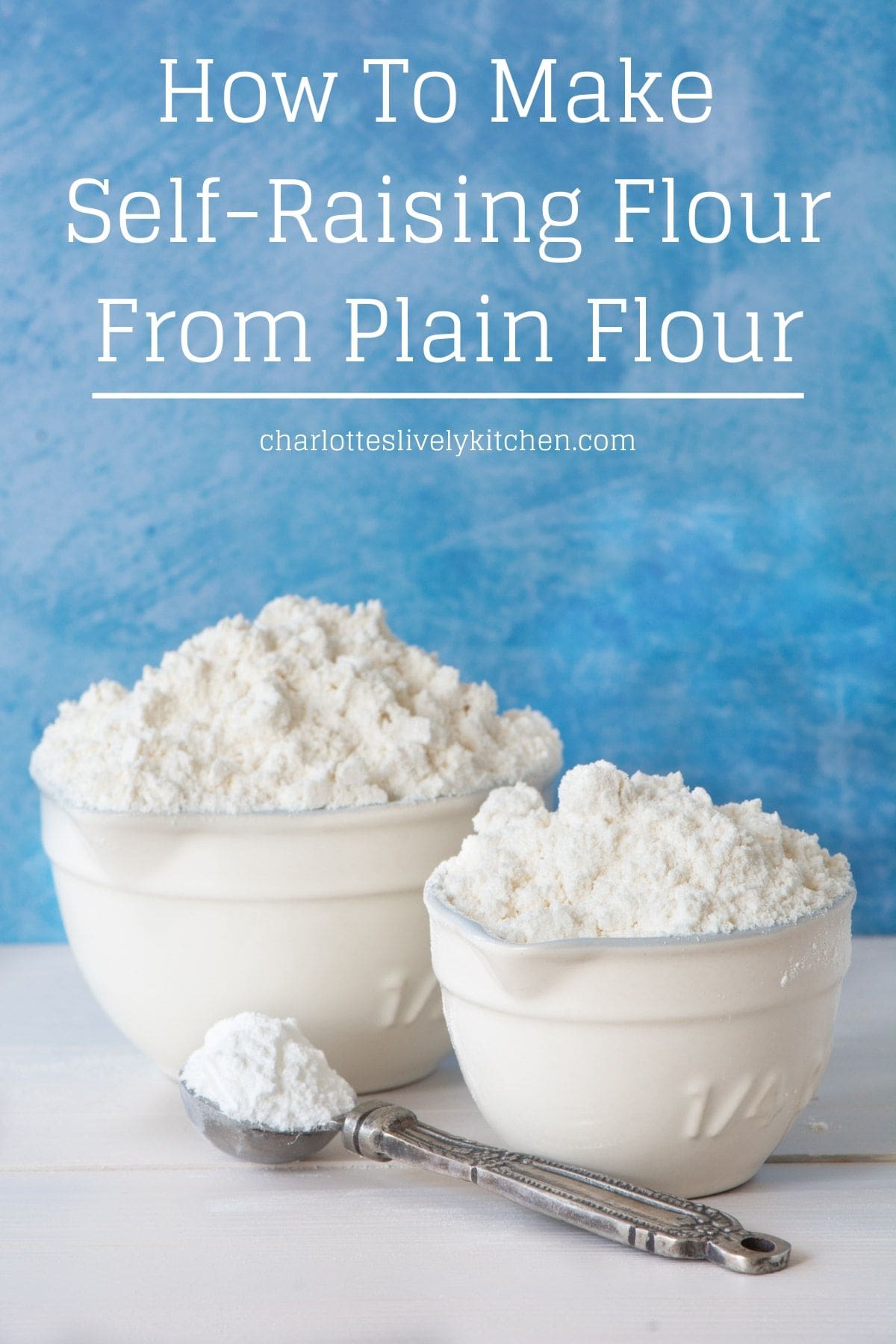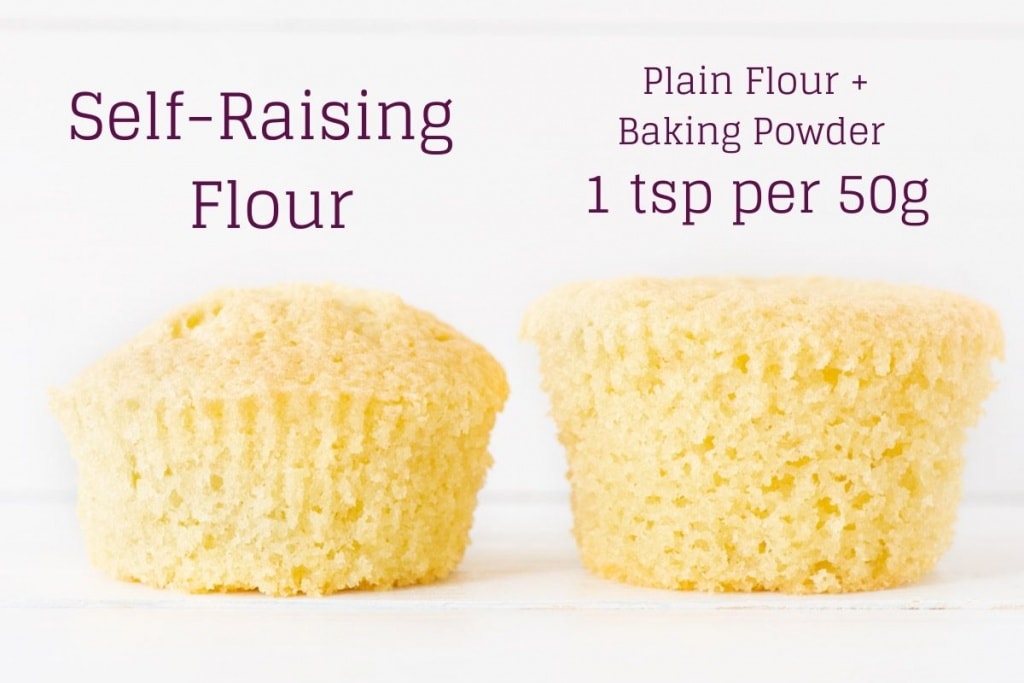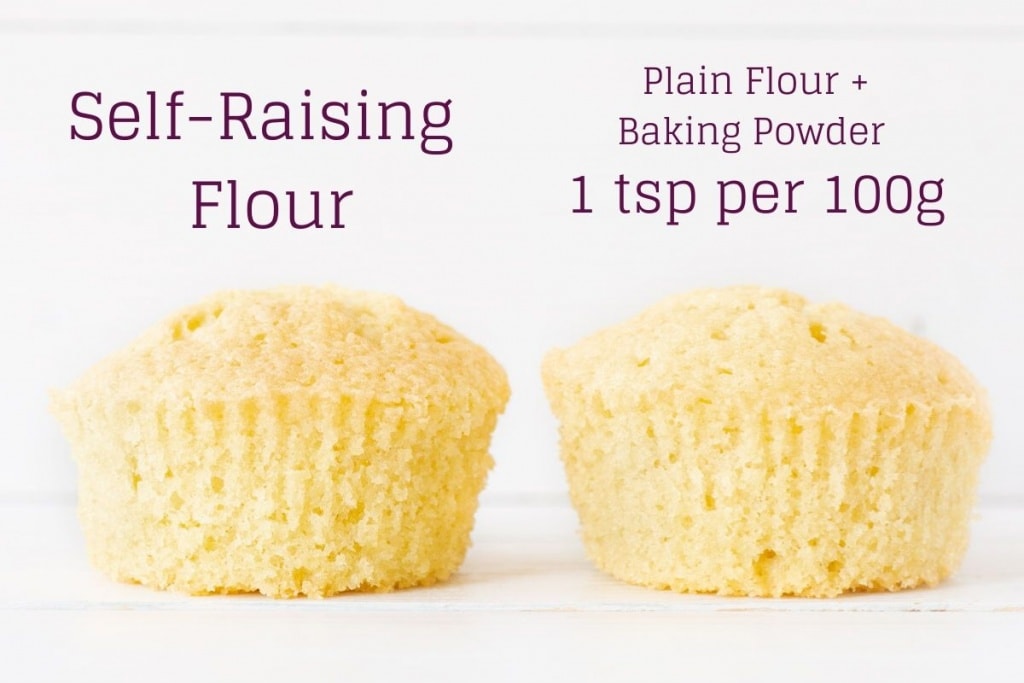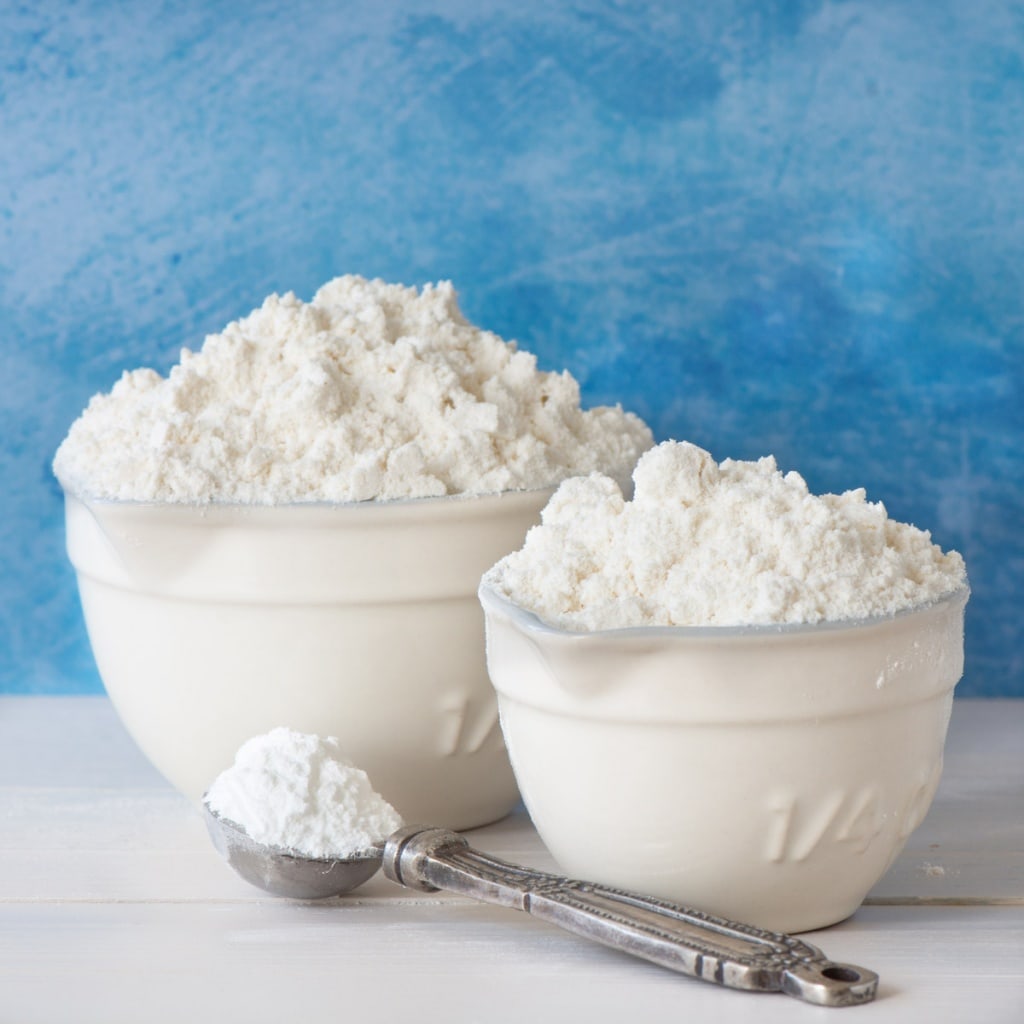How To Make All Purpose Flour Into Self Rising Flour
How to make self-raising flour from manifestly (or all-purpose) flour and baking pulverisation.
Skip to the recipe

I utilise self-raising flour in a lot in my recipes and one question I get asked quite regularly is how they tin can exist adjusted to be fabricated from plainly or all-purpose flour with added baking pulverization.
There are lots websites and books about which suggest the correct quantity of blistering powder to add to plain to turn information technology into self-raising, but annoyingly they don't all agree.
Nigella suggests adding ½ tsp of baking pulverization and ½ tsp of bicarbonate of soda to 150g of plain flour, whereas Blistering Mad suggests adding ii tsp of baking powder to 150g of flour. Then King Arthur Flour proposes adding 1½ tsp of baking powder and ¼ tsp of salt to 120g of flour. As you tin can see the suggestions aren't even close!
So how how on earth do we know how much baking powder is needed to brand self-raising flour?
My solution (the aforementioned as always)… to get into the kitchen and get blistering.
The experiment
I decided to make lots of simple vanilla cupcakes, 1 batch using self-raising flour and so all the others made with patently flour and subtly different amounts of baking powder.
NOTE – The vanilla cupcake recipe I used for these experiments is e'er so slightly different from the recipe linked in a higher place, equally in that recipe I add extra baking powder. For this experiment I decided to leave that out as I felt it gave a cleaner comparison.
The results
As expected, the more baking pulverization that'south used the greater the rising.

You lot can see the cupcake fabricated with just patently flour is much shorter than the others. Also, as it baked a lot of the fat bubbled out leaving it dry and dumbo. If you e'er take a cake that doesn't rise as expected, it would suggest that your baking powder isn't working properly (or y'all've use bicarbonate of soda instead – something I'll be writing a postal service about presently).

If you want to bank check your blistering powder you can add a little to some humid water. If it bubbles (the bubbling will be quite furious), you can go baking. If not, it's time to get to the shops for a fresh bundle.
Going to the other terminate of the scale, when yous compare the cupcake made with self-raising flour to the cupcake fabricated with 1 tsp of blistering pulverization per 50g of plainly flour, you can come across that the manifestly flour cupcake is taller (peculiarly at the sides) and flatter on top. I similar a alpine flat cupcake which is why I frequently add additional baking powder to my recipes when using self-raising flour.

Then, much like in goldilocks and the three bears nosotros have i cupcake that'south too small and one cupcake that'south as well big and fluffy. All we demand now is a cupcake that's just right…
How much baking pulverisation should be added to obviously flour to make self-raising flour?
The answer is ane tsp of baking powder per 100g of manifestly flour.

You tin come across that the cupcakes are not only nearly identical in terms of height, they've also got a very similar dome on top.
Is that a heaped teaspoon or a level teaspoon?
Always a level teaspoon (much more accurate as some teaspoons will hold a bigger heap than others depending on their shape).
As well, I always use a measuring teaspoon rather than one I'd use to make a cup of tea every bit again information technology's much more accurate.

Is self-raising flour in the UK the same as cocky-rising flour in the United states?
Unfortunately not, so if you find a recipe that calls for ane of these and you're non in the correct country then I'd suggest using a homemade version.
The version I've shared hither is for Britain self-raising flour (equally that's what I use and what I can become agree of in the shops for my testing). US cocky-ascent flour has a lower amount of baking pulverization and also contains added salt.

Foreclose your screen from going dark
- 100 g plain or all-purpose flour
- i level tsp baking powder - I always apply a measuring teaspoon rather than ane I'd utilise to make a loving cup of tea every bit information technology's much more accurate.
-
Put your ingredients (100g plain flour, 1 tsp blistering pulverization) into a large basin.
-
Mix together (I similar to use a whisk) until the baking pulverization is evenly distributed in the flour.
-
Your cocky-raising flour is now ready to utilize in your chosen recipe.
This recipe will give you e'er and then slightly over 100g of self-raising flour (due to the weight of the baking powder). Withal, you shouldn't discover a divergence in the results of your baking by using information technology as a substitute for 100g of cocky-raising flour.
SUBSCRIBE to the Charlotte's Lively Kitchen Mailing List
Calories: 342 kcal | Carbohydrates: 71.7 thou | Protein: 10 g | Fat: 1.three m | Saturated Fat: 0.2 k | Sodium: 491.6 mg | Fiber: 3.1 g | Sugar: i.five g
Whatsoever nutritional information provided is the estimated nutritional information per serving. Delight refer to my guide to Charlotte's Lively Kitchen nutritional information if you would like to learn more about how this is calculated.
Source: https://charlotteslivelykitchen.com/self-raising-flour/
Posted by: garveyexprion.blogspot.com


0 Response to "How To Make All Purpose Flour Into Self Rising Flour"
Post a Comment